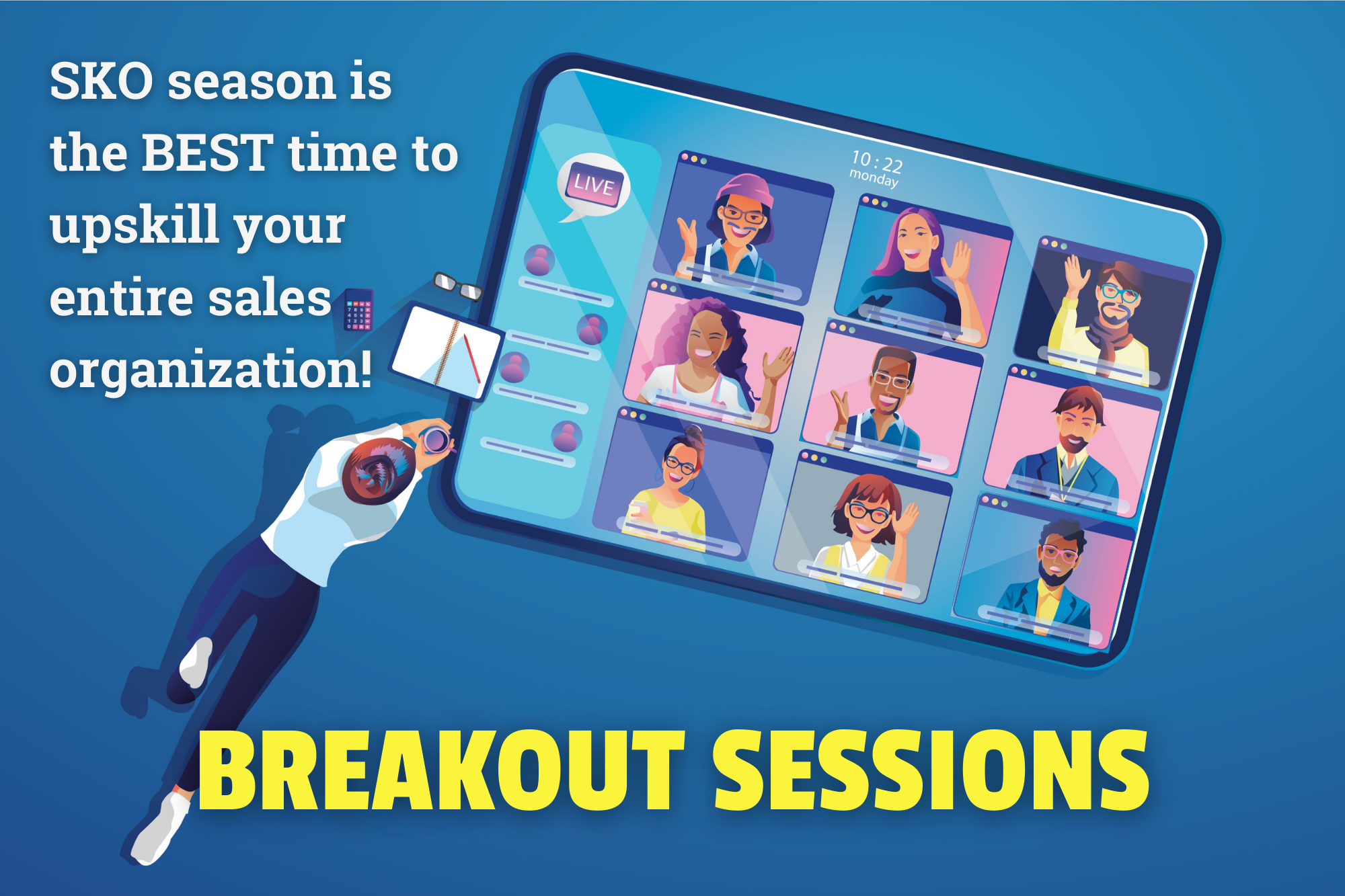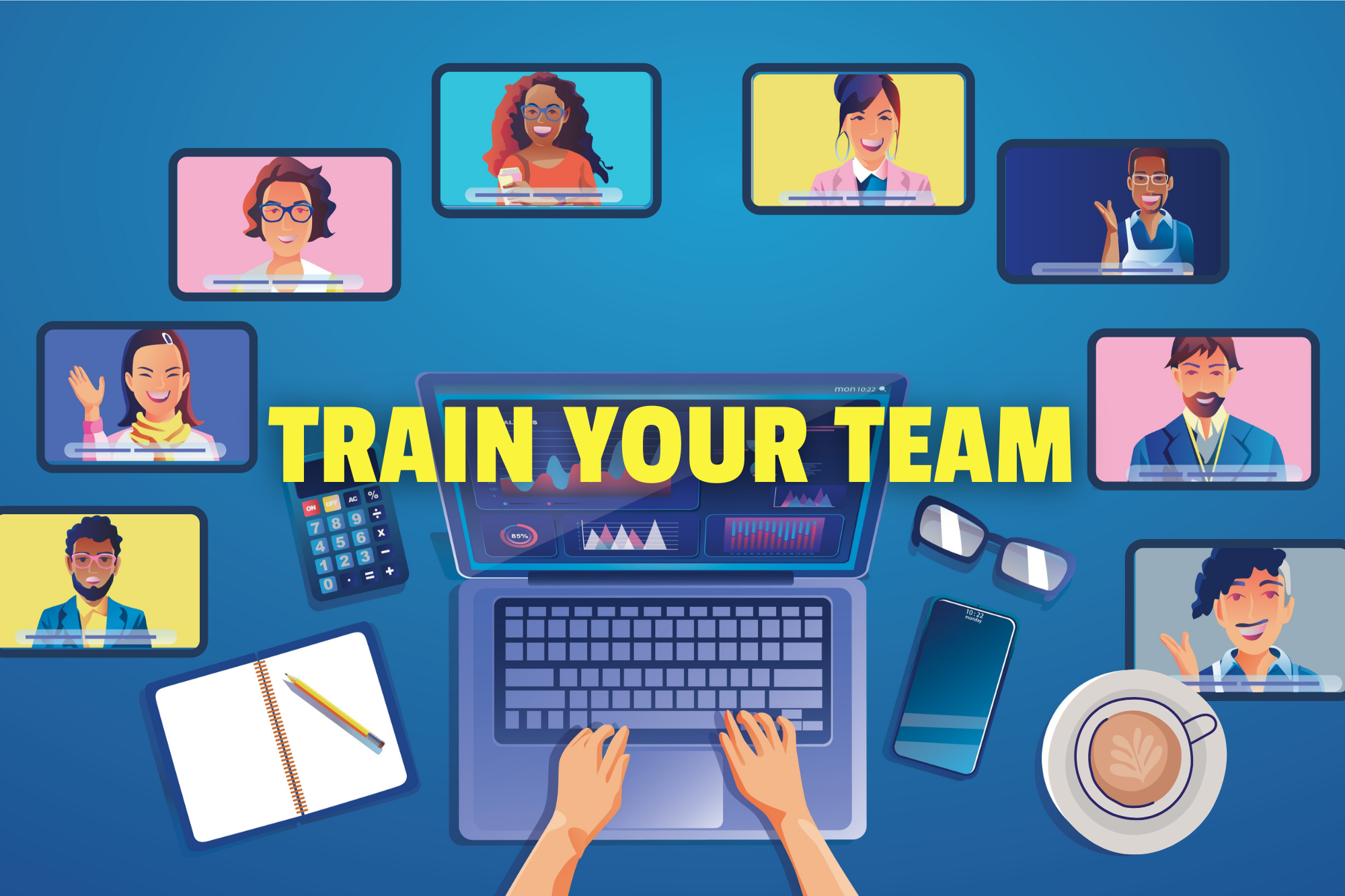Sales Kickoff Success 2024- Breakout Sessions
Part 1 and Part 2 of this series revealed our secret ingredients for successful SKO keynote speakers and SKO soft-skills training sessions. We...
In our recent webinar, we sat down with Kim Fisher, a seasoned sales enablement leader at Workiva, to discuss best practices for planning impactful Sales Kickoffs (SKOs). With planning season in full swing for January events, Kim shared practical insights from managing SKOs for over 1,000 revenue team members across 22 different selling roles.
Chad: Kim, let's start with the foundation. When you're making decisions about what to program at your SKO, how do you think through turning that into real results?
Kim: I think you were intentional in choosing the word "ROI mindset" rather than just ROI, because when it comes to programming, it's very challenging to have hard ROI for your SKO programming. So we think about it more in terms of driving behavior change.
The way we look at it at Workiva specifically is we don't look at SKO as our opportunity to hammer home new ideas or big learning topics. The reality is that people come in with this fresh start mindset, celebrating the past year and looking ahead. So we want to balance the energy and excitement with reinforcement rather than trying to bite off massive new topics.
Chad: That makes sense, especially with your scale. Rolling out something brand new to 800 to 1,100 people is going to take more time than an SKO allows.
Kim: Exactly. And with 22 selling roles in our organization, we're also applying the lens of how do you serve the unique needs of all these different types of roles? You have to apply that extra lens in our case.
Chad: One challenge I used to face was managing everyone who wants time at SKO. How do you deal with stakeholders who passionately believe something needs to be programmed when you don't think it's the right time?
Kim: That's every year! Listening is clearly the first step, really trying to understand why they feel so passionate. There may be another opportunity for that perspective that isn't directly tied to SKO, so I don't want to rule it out right away.
When I think about the SKO portion though, it's always tying back to top-down executive team priorities. I don't try to draw that parallel myself – we go back to the folks proposing content and ask: "Help me understand how that ties back to these corporate, executive-level initiatives." They might really convince us, but we always ask how it hits the top and whether it makes sense for this window of time.
Chad: You mentioned focusing on reinforcement rather than introducing completely new concepts. Can you give us an example of how you make that practical?
Kim: I'm always leaning into the application of frameworks rather than just the frameworks themselves. It's one thing to bring in a new framework that talks about selling from a value perspective, but what does that mean to you as a seller in your specific company?
Instead of giving people a checklist of 10 things, I try to narrow it down to those one or two things that, from a practicality standpoint, they can take away and do in their specific role.
Chad: That connects to what we call the "Monday morning test" – when you get back from traveling from SKO, what is going to be different on Monday? If you can't quantify or observe that, we really didn't do our job.
Chad: Let's talk about AI, since so many companies are trying to figure out their AI story. How are you thinking about AI's role at SKO?
Kim: I see two camps around AI right now – AI in our products, and using AI for efficiency in doing our jobs. While they're technically separate topics, I like to keep them very much associated because the ways we leverage AI to do our jobs more effectively probably relate pretty closely to the solutions our companies are putting out for end users.
I'm really focused on not making assumptions about where people are in their understanding, whether it's the product side or using it in their jobs. How do I help people feel more confident when talking about AI? You do that by using it.
Chad: That's smart from a learning perspective – whether it's our AI product or AI helping us prepare, the mindset is the same for confidence and adoption.
Kim: Exactly. If you can help them understand how to use it in their jobs, then they're going to start to envision how their customers might use it in our product, because then you have real experience as a human in a job.
Chad: What have your most memorable SKOs included where participants said "wow, that was great"?
Kim: I would say these sessions where we have a lot of people in the room, but you've found ways to get them to interact that is fun, informative, with very bite-sized information. It's two-way – you might be giving a nugget, they're giving you something back.
One example was a game called "Heads and Butts" – a true or false, yes or no quiz where everyone stood and had to choose their answer physically. We couldn't move once we chose because otherwise people would be looking around. The energy moved through the space, but we were able to see if the learning stuck while people were also proud of getting answers right.
Chad: The good SKOs I've seen have clarity – you can see it in attendees' faces whether they're drained or energized at the end of the day. The good ones are energized because there's focus, thoughtful selection of who's on stage, the right approach, proper breaks, and interactive elements.
Chad: Speaking of what not to do, what are some crimes that kill SKO momentum?
Kim: My pet peeve is when you have 10 different presenters over two days and all of them say "If you take away only one thing from this week, take this away." Well, now you've got 10 "one things." Know what everyone else is planning to say and please don't use that phrase across every session.
Chad: The biggest crime I see is awkward presentations. When you have hundreds or thousands of people in a room and someone on stage doesn't know how to carry a room, everybody feels awkward. The bigger risk is often in breakout sessions where someone is just walking through slides, talking at people the whole time.
Kim: And if the main stage has great theming and engagement, but that's not carried through to breakout sessions, people feel it. If it's important enough to cover, find a way to tie it to the general theme and use those same engagement techniques.
Chad: You mentioned something important about having executives carry the message of change rather than enablement teams. Why is that critical?
Kim: Simply from an optics perspective, it's important that the folks you report up to in a sales organization are really the ones carrying the message, because they're the ones you're going to look to day-to-day. If they're not top-down bringing that message to an SKO, it's likely to get lost.
But it's not just about the senior-most executives starting the messaging. As you move down through different levels of sales leaders, if they don't contextualize that particular message for what it means in this specific sales team, then it's going to get lost also. You've got to make it meaningful for me in this one role.
Chad: Any final thoughts for people planning their SKOs?
Kim: Always remind myself to set the ego aside when thinking about programming. A bunch of content is going to get chopped because we have to get into the headspace of participants – how is it going to feel to be at this event?
When you think you have your content, stack rank it by priority. Then ask yourself: if I had to cut half of it, is that okay? Go in knowing you're going to lose some content anyway, so start by chopping the bottom yourself. Then be okay that what's left at the bottom might not get covered based on great conversation in the space.
For more insights on sales enablement and SKO planning, connect with Kim Fisher on LinkedIn (look for the ballroom dancer background photo!) or reach out to the team at 2Win Global for support with your upcoming sales kickoff.

Part 1 and Part 2 of this series revealed our secret ingredients for successful SKO keynote speakers and SKO soft-skills training sessions. We...

In Part 1 of this series, we focused on how you can ensure the success of your Keynote speakers. In part two of this series, we will explore why an...
Reaching Cruising Altitude in Global Sales Enablement